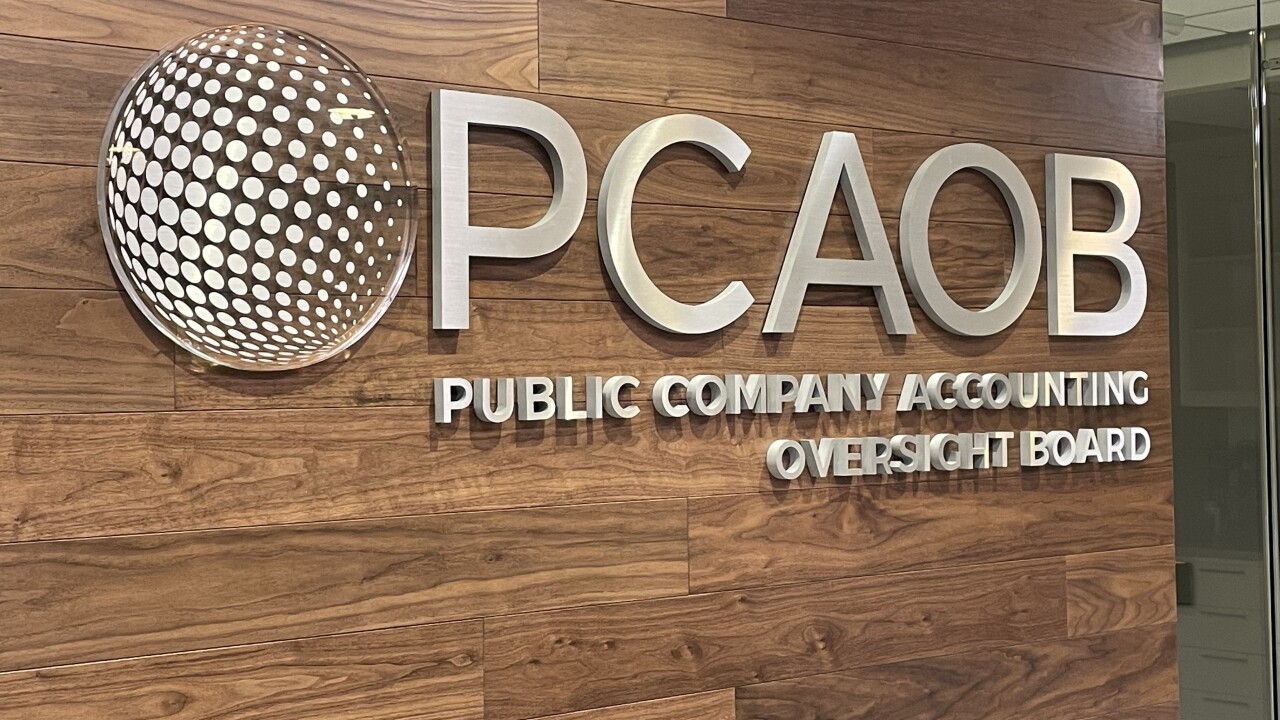In telling their stories about how the future is bright for stocks, bulls point to solid earnings to justify the optimism. But cracks are forming in that narrative — in the trajectory of profits, and just as worryingly in the makeup of the profits themselves.
In a potentially ominous development, earnings across U.S. industries have started to expand noticeably faster than cash is coming in the door. Income at S&P 500 companies, adjusted for amortization and depreciation, topped cash flows from operations by 14% in the year through September, according to data compiled by UBS Group AG that excludes the index's financial and energy firms.
In other words, for every dollar of profits, only 88 cents was matched by cash inflows, the largest discrepancy since at least 1990. One way this happens is when money owed to companies is booked as sales before payment actually arrives, a perfectly acceptable accounting treatment that nevertheless stirs anxiety when it's trending in this manner. Another way is when the cost of producing goods understates the cash being consumed as inventory builds.

Rather than an indication of bad management behavior, the widening gap likely highlights a harsh business environment, raising questions over the reliability of the
"Managers are under so much pressure to deliver earnings that they're using a lot more accounting than they have in the past to make their earnings look good," said Sanjeev Bhojraj, alumni professor in asset management at Cornell University. "If my dollar of earnings has no cash or negative cash, that's poor quality because all the earnings that I have are just accounting."
The concept of earnings quality is an abstract one, subject to a panoply of moving parts. Broadly speaking, it measures how reliable current earnings are and how able they are to predict future cash flows. An increase in income without a commensurate rise in cash flow, for instance, is typically viewed as inauspicious.
Right now, the issue is widespread. Measured against assets, the median company in the S&P 500 saw this type of cashless earnings — items that in accounting parlance fall into a category known as
At the center of the worsening situation is a surge in inventory where cash is tied up on a warehouse shelf or an unsold development. A jump in the amount of money owed by customers can have a similar impact.
As a way of illustration, consider Deere & Co., a machinery maker. For the year through January, the company reported net income of $8.2 billion, compared with $6 billion in operating cash flows. Contributing to the gap was an increase in accounts receivable of $3.4 billion — payments that had yet to hit the coffers despite providing a lift to the bottom line.
Homebuilder PulteGroup Inc. offers another example. It booked $2.6 billion in profits last year on the back of almost $670 million of cash flows. Hindering cash generation was a $2.3 billion buildup in inventory where money was spent on manufacturing houses that had not produced revenues. The firm blames supply-chain disruptions for extending its construction cycle to more than 160 days, up from about 90 days pre-COVID.
"The longer build cycle was a big driver of the increase in inventories," Jim Zeumer, a spokesman for PulteGroup, wrote in an email. "With improving availability of material and labor, cycle times are beginning to decrease which will allow inventories to improve."
A spokesperson for Deere declined to comment.
The worsening earnings quality is prompting concern especially since corporate earnings were often cited as one big driver behind the latest rally that lifted the index as much as 17% from its October low. If the trend in accruals is any guide, all the positive surprises in profits perhaps weren't as much to cheer about.
Keith Parker, head of U.S. equity strategy at UBS, views the expansion in accruals as a sign that the cycle of earnings downgrades is far from over and the new-year equity rally will likely fizzle out.
"It's just another marker that points to earnings power being less than what we're seeing on the headline level," Parker said. "When you do the math on what's the difference between earnings and operating cash flow, that wedge points to considerable risk to earnings if they were to catch down to cash flow, something on the order of 15% downside."
Gauging earnings quality has become a
"
The latest rise in accruals likely reflected an urgency among business leaders to sustain profits after an abrupt
As of the 12 months through January, roughly 32% of firms in the Russell 3000 Index were losing money, according to data compiled by Kailash Concepts Research and Bloomberg. Before the pandemic, only twice since 1978 had profitless firms been so widespread — in the dot-com era during the early 2000s and the aftermath of the 2008 global financial crisis.
"The pressure on these leadership teams is intense," said Gregg Fisher, founder of Quent Capital LLC. "If you're getting ready to release your earnings and you can move a penny around somewhere from left to right, it just might tell a better story that as long as it's legal, they do it."
— With assistance from Tom Contiliano, Joe Deaux and Naureen S. Malik





